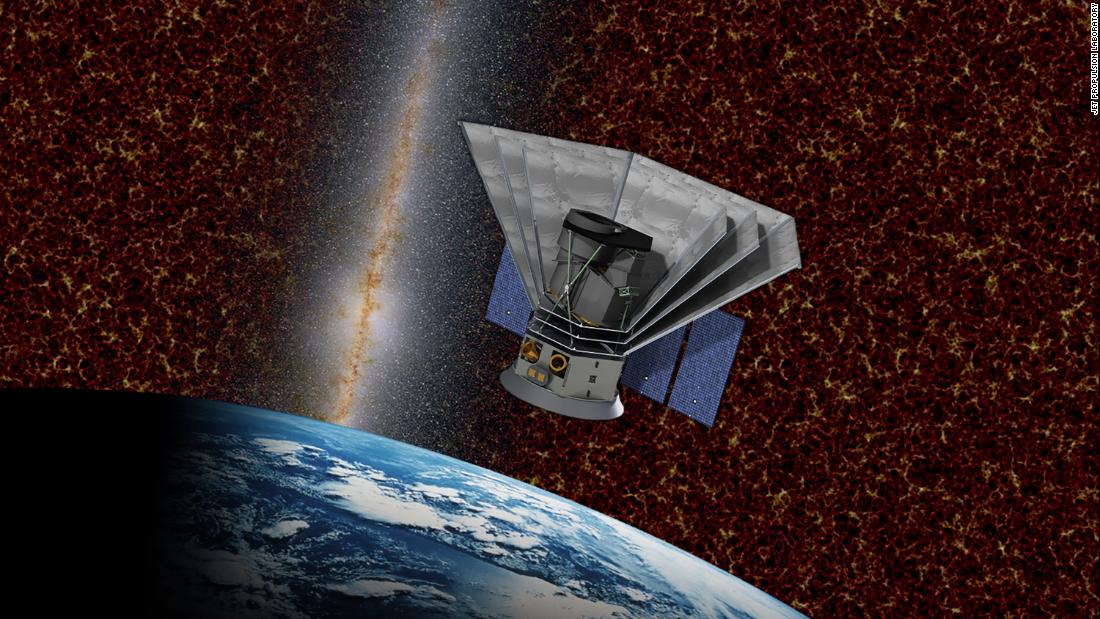
The mission will foster our understanding of how the universe expanded rapidly just after the Big Bang occurred.
The data collected by the space observatory will result in a 3D map of the sky, making it NASA’s first mission to create a near-infrared light-wide spectroscopy map. The name “SPHEREx” is an abbreviation for Spectro-Photometer for the History of the Universe, Epoch of Reionization and Ices Explorer.
The space observatory, similar in size to a subcompact car, is expected to be launched between June 2024 and April 2025.
Tracking countless galaxies and stars
SPHEREx instruments will observe the sky with visible light and near infrared light. The human eye cannot see near-infrared light, but it has helped astronomers look at invisible aspects of space and learn more about the universe.
Their instruments will use spectroscopy to separate near-infrared light that the telescope can see at individual wavelengths. These data can shed light on the composition of an object or even on its distance from the Earth.
“This is like moving from black and white images to color; it’s like going from Kansas to Oz,” Allen Farrington, project manager of NASA’s Jet Propulsion Laboratory’s SPHEREx project, said in a statement.
Scientists hope to collect data on more than 300 million galaxies near and far, some of which are so far away, that light has taken 10 billion years to reach Earth.
The telescope will also explore more than 100 million stars in our Milky Way galaxy as it searches for water ice and other organic molecules in star nurseries and areas around stars where new planets could form. These stellar birthplaces, where stars come together from gas and dust, could contain evidence of ingredients for life.
At the end of the mission, astronomers expect to have a map of the entire sky that exceeds the resolution of previous similar maps, according to the agency.
The SPHEREx space telescope will also be able to identify objects of interest that other NASA missions can observe in more detail.
Tracks of new star formations
The mission team considers some specific goals for SPHEREx.
Scientists will look for evidence of inflation in the universe a fraction of a second after the Big Bang, when space as we know it expanded rapidly. This would have changed the way matter is distributed. There may be evidence of this inflation in the patterns and positioning of galaxies throughout the universe.
Astronomers also want to know more about the history of how galaxies formed, including the first stars to form after the Big Bang. Galaxies have a faint glow. This glow varies by space depending on the location of galaxies, as some of them tend to remain in groups called clusters. Maps created by SPHEREx that decompose light into different bands of colors could reveal more information about the first galaxies that formed stars.
By closely analyzing the new stars that form in the Milky Way, astronomers will also be able to learn more about how young planetary systems are created. Planets are formed from the remnants of star formation, essentially disks of gas, dust, and water ice that swirl together. This excess water ice could basically carry water and other organic molecules to the planets, just like the way water was delivered to Earth early.
This will tell scientists whether our planetary system, which includes the Earth and its ability to support life, is common or rare.
Final design and assembly
NASA officials announced this week that the mission has entered Phase C, which means the first design plans have been approved and teams can begin final design and assemble hardware and software. The California Institute of Technology and NASA’s Reaction Propulsion Laboratory will develop SPHEREx instruments while the spacecraft itself will be built by Ball Aerospace.
The SPHEREx team will spend the next 29 months building these components before entering the next mission phase: assembly, testing and launch.